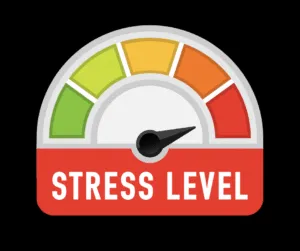For puppy parents, coming home to a dog crate that’s been breached can feel like a scene from a prison break movie. One minute, your furry friend is safely tucked away; the next, you find your puppy chilling on the couch, the crate door ajar (or completely dismantled), and that unmistakable “Who, me?” expression on their face. If you’ve ever wondered why your Puppy Breaks Out Of Crate, this article is for you.
What your puppy’s crate breakout is really trying to tell you goes beyond just a need to stretch their legs. It’s a clear signal that something deeper is at play. Understanding this behavior is the first step toward a more peaceful home for both you and your adventurous little escape artist. When you notice your dog won’t stay off the couch after a crate escape, it’s often a sign of underlying issues that need to be addressed through consistent training and a deeper understanding of their needs.
 A mischievous puppy peeking out from a slightly ajar metal crate door, symbolizing a puppy breaking out of crate.
A mischievous puppy peeking out from a slightly ajar metal crate door, symbolizing a puppy breaking out of crate.
Our Experience with Crate Breakouts
Let me share a common scenario we’ve seen: a lively Husky mix puppy, let’s call him Max. Max was big, fluffy, and incredibly intelligent. His crate was a robust, heavy-duty structure, marketed as “indestructible.” Initially, the crate was seen as a valuable investment, meant to provide a safe place for Max to relax and prevent puppy-related chaos.
The first time Max broke out, it was easy to dismiss, perhaps a latched door not quite secured. But then it happened again, and again, and again. One day, the crate door was hanging by a thread, and Max’s blanket was shredded across the living room like confetti. Max himself was sitting there, unbothered, as if waiting for a snack. It became clear that this wasn’t just a “crate problem”; it was a communication issue from Max, and a training challenge for us.
 A destroyed dog blanket and a damaged wire crate, evidence of a puppy's desperate attempt to escape due to anxiety.
A destroyed dog blanket and a damaged wire crate, evidence of a puppy's desperate attempt to escape due to anxiety.
The Psychology Behind a Crate Breakout
When your puppy goes full Houdini on their crate, it’s rarely about simple defiance. More often, it’s a manifestation of stress or anxiety. Puppies, much like adult dogs, can feel trapped both physically and mentally in crates, especially if they associate the crate with isolation or punishment. Dogs are highly social animals. If a puppy feels like they are being “banished” from their human pack, they might begin to plot their grand escape. This behavior is often their way of signaling, “I can’t handle this alone!”
It’s an ironic twist: the crate, which is intended to be a calm and safe haven, can sometimes become the source of significant stress for a puppy. It’s crucial to understand this underlying emotional state rather than just focusing on the physical act of escaping.
 A sad-looking puppy in a crate, showing signs of distress and fear, indicating the psychological reasons a puppy breaks out of crate.
A sad-looking puppy in a crate, showing signs of distress and fear, indicating the psychological reasons a puppy breaks out of crate.
Your Puppy’s Silent (and Not-So-Silent) Cries for Help
Puppies are constantly trying to communicate with us. While they can’t speak our language, their actions—especially something as dramatic as a crate breakout—are clear messages if we know how to interpret them. A puppy escaping their crate is akin to a distress signal. Let’s decode some of the common messages they might be sending:
- “I’m Lonely, Human!” Separation anxiety is one of the leading causes of crate breakouts. If your puppy isn’t accustomed to spending time away from you, they can become extremely anxious when confined. A breakout might be their desperate plea for connection, signaling, “Where did you go? I need you!” Working on how to teach a puppy not to jump on you can also improve overall manners and build confidence during separation.
- “This Space Feels Like a Jail Cell.” Some puppies experience claustrophobia. It’s not always about the crate’s size, though an ill-fitting crate can certainly contribute. It’s about the feeling of being confined, as if sentenced to solitary confinement. They might be trying to say, “I need more space to breathe!”
- “I’m Bored Out of My Mind!” Puppies thrive on stimulation. When left in a crate with nothing engaging to do, they will find their own entertainment—which often involves chewing, digging, and devising an escape plan. This is their version of asking, “When are you coming home? I’m so bored!”
- “I’m a Free Spirit, Okay?” Some puppies simply aren’t suited to traditional crate training, no matter how much effort is put in. They might never truly see the crate as a happy place, viewing it instead as an obstacle to their freedom. These determined puppies will dedicate their time to figuring out how to get out. If your puppy is constantly trying to escape, they might also be trying to pull on leash during walks, indicating a need for more mental and physical engagement. For tips on managing leash behavior, explore how to get puppy to stop pulling on leash.
 An active, energetic puppy inside a crate with chew toys, suggesting boredom or a free spirit as reasons for a crate breakout.
An active, energetic puppy inside a crate with chew toys, suggesting boredom or a free spirit as reasons for a crate breakout.
Managing Your Puppy’s Stress (and Your Own)
The good news is that you’re not alone in dealing with a puppy that breaks out of crate, and there are effective strategies to manage your puppy’s stress and, in turn, your own. The goal is to address the root cause rather than just reinforcing the crate.
- Take a Deep Breath—For Both of You. First and foremost, remain calm. Stress is contagious, and your puppy will pick up on your anxiety. If they’ve escaped, don’t assume disobedience or malice. They’re simply trying to tell you something is wrong.
- Reevaluate the Crate Situation. Not all crates are suitable for every puppy. Your puppy might need a larger crate, a more comfortable bed, or even a different style of crate that feels more like an open den than a confined box. Small adjustments can make a significant difference.
- Ease Separation Anxiety. If separation anxiety is the primary issue, gradually introduce alone time. Start by leaving your puppy in the crate for very short periods, then slowly increase the duration. Always pair crate time with positive reinforcement: special treats, engaging toys, or calming music. This helps them associate the crate with positive experiences.
- Enrichment is Key. For puppies struggling with boredom, provide plenty of mental and physical stimulation. Puzzle toys, durable chew toys, and Kongs filled with frozen treats can keep them occupied and mentally engaged. This makes their crate time more enjoyable and less about escaping.
- Consider Professional Help. If your puppy’s stress or escape attempts seem extreme or are causing significant damage, it’s wise to consult a professional dog trainer or behaviorist. They can help identify the root cause of your puppy’s anxiety and develop a tailored training plan to address it effectively. If your puppy’s destructive tendencies extend to furniture, you might find valuable guidance on managing similar behaviors by learning how to stop puppy jumping on couch or other unwanted household habits.
 A loving owner gently comforting a calm puppy, demonstrating positive reinforcement and stress management techniques to prevent crate escapes.
A loving owner gently comforting a calm puppy, demonstrating positive reinforcement and stress management techniques to prevent crate escapes.
The Ironic Truth
Ultimately, the ironic truth is that puppies, much like humans, are trying to communicate with us when they’re stressed. As their caregivers, we need to learn to interpret these messages. Our own experience with the puppy Max taught us that his anxiety wasn’t just about the crate itself; it was about his inability to self-soothe, relax, and manage his emotions when he couldn’t see, smell, or hear us.
It was a humbling realization that focusing solely on “training” Max to be crate-friendly had caused us to overlook the deeper emotional distress. Sometimes, when a puppy breaks out of crate, it’s not about the crate at all. Instead, it’s a window into what’s truly happening within their mind.
 A content puppy relaxing comfortably in an open dog crate, illustrating successful crate training and emotional self-soothing.
A content puppy relaxing comfortably in an open dog crate, illustrating successful crate training and emotional self-soothing.
Conclusion
Next time you come home to a crate escape, resist the urge to simply shake your head in disbelief. Instead, pause and ask yourself: what is my puppy truly trying to tell me? Behind every jailbreak is a deeper story—one about connection, trust, and effective stress management. By understanding the underlying reasons why your puppy breaks out of their crate, you can develop a more compassionate and effective approach to training, fostering a stronger bond and a happier, more secure environment for your furry companion.
